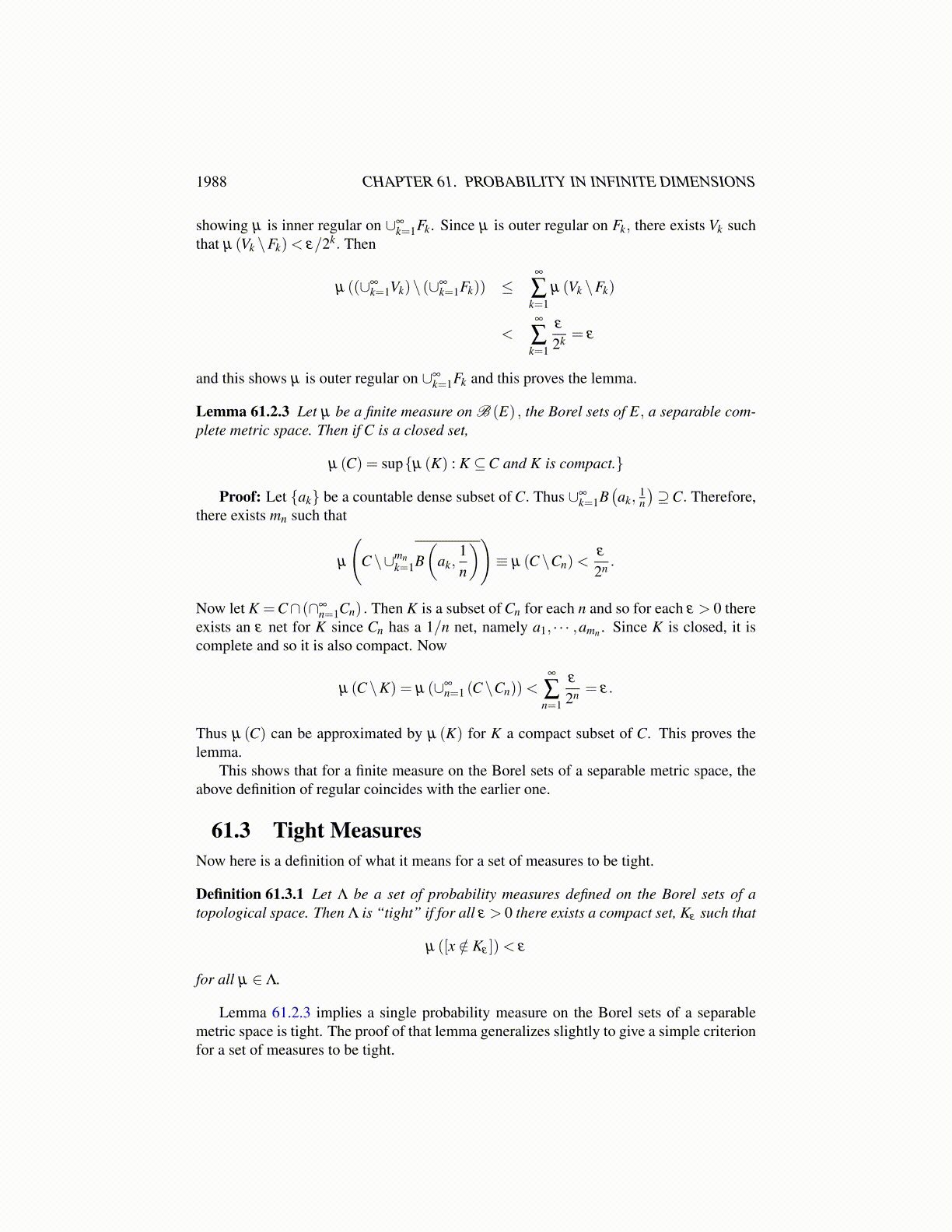
1988 CHAPTER 61. PROBABILITY IN INFINITE DIMENSIONS
Since A is arbitrary, this shows that
||E (X |G )|| ≡ ||Z|| ≤ E (||X || |G ) .
In the case where E is reflexive, one could also use Corollary 21.7.6 on Page 681 to getthe above result. You would define a vector measure on G ,
ν (F)≡∫
FXdP
and then you would use the fact that reflexive separable Banach spaces have the RadonNikodym property to obtain Z ∈ L1 (Ω;E,G ) such that
ν (F) =∫
FXdP =
∫F
ZdP.
The function, Z whose existence and uniqueness is guaranteed by Theorem 61.1.2 iscalled E (X |G ).
61.2 Probability Measures And TightnessHere and in what remains, B (E) will denote the Borel sets of E where E is a topologicalspace, usually at least a Banach space. Because of the fact that probability measures arefinite, you can use a simpler definition of what it means for a measure to be regular. Recallthat there were two ingredients, inner regularity which said that the measure of a set isthe supremum of the measures of compact subsets and outer regularity which says that themeasure of a set is the infimum of the measures of the open sets which contain the givenset. Here the definition will be similar but instead of using compact sets, closed sets aresubstituted. Thus the following definition is a little different than the earlier one. I willshow, however, that in many interesting cases, this definition of regularity is actually thesame as the earlier one.
Definition 61.2.1 A measure, µ defined on B (E) will be called inner regular if for allF ∈B (E) ,
µ (F) = sup{µ (K) : K ⊆ F and K is closed}
A measure, µ defined on B (E) will be called outer regular if for all F ∈B (E) ,
µ (F) = inf{µ (V ) : V ⊇ F and V is open}
When a measure is both inner and outer regular, it is called regular.
For probability measures, regularity tends to come free.
Lemma 61.2.2 Let µ be a finite measure defined on B (E) where E is a metric space.Then µ is regular.